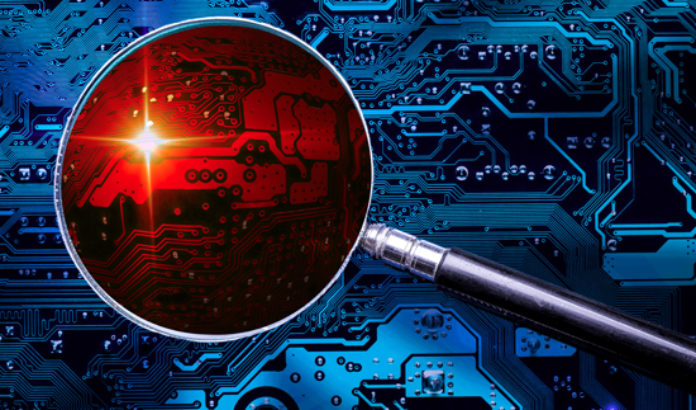03 Dec 2018
Due to a combination of new laws, government policies and initiatives, and market forces, the U.S. patent system is constantly evolving. Here’s a rundown of the most important changes from the past decade that could affect your tech company.
HOW THE U.S. PATENT SYSTEM EVOLVES
The U.S. patent system is a dynamic, nebulous interworking of the U.S. Patent and Trademark Office, federal courts, Congress, special-interest groups, universities, attorneys, investors, foreign and domestic corporations, and many others.
In recent history, the patent system has significantly evolved through:
- New statutes passed by Congress — while infrequent, these changes have the highest impact
- New patent office rules, policies, initiatives and programs that take effect each year
- New court opinions that are issued every year
- Litigants and patent owners who are always finding new and innovative patent strategies
- Interest groups who are always lobbying for changes in their own interests
The interplay of these forces has created a push-pull effect over the years, with the pendulum swinging away from patent owners most recently. The tides are turning, but here’s a very brief summary of how we got to where we are today.

NOTABLE RECENT EVENTS IN THE U.S. PATENT SYSTEM
It’s admittedly not feasible to recount, in a single blog post, all of the events that have changed the U.S. patent system over the past decade — so we’ve chosen five highlights that have (from our perspective) had the biggest impact on tech companies who rely on strong patent protection as part of their business strategy.
THE RISE OF HIGH-VOLUME FILING TRENDS
Since the 2000s, virtually all large tech companies have been filing massive numbers of patents. According to the Intellectual Property Owners Association, the top 15 patent owners of 2017 each obtained about 2,000 patents or more — with the top performer, IBM, getting 8,996 issued patents in 2017 alone.
For big tech companies, pursuing a high-volume defensive strategy to deter litigation and promote cross-licensing has become necessary for survival.
EAST TEXAS: A HOTBED OF PATENT LITIGATION
For 15 years, the Eastern District of Texas was virtually every patent owner’s favorite venue for patent lawsuits. In the first quarter of 2017, more patent cases were filed in the Eastern District of Texas (33 percent) than in any other U.S. jurisdiction.
Why? The district had developed a reputation for having pro-plaintiff judges and “rocket dockets” that ensure speedy trials. As a result, patent assertion emerged as a business — where companies would enforce their patent rights aggressively (and ostensibly beyond the patent’s actual value, in some egregious cases), maximizing their profits without contributing to technological advancement.
In May 2017, the Supreme Court’s TC Heartland ruling restricted where companies may file patent cases, which has since reduced the number of patent lawsuits filed in East Texas.
THE EXPANDING ROLE OF THE U.S. SUPREME COURT
The Supreme Court of the United States (SCOTUS) has taken a more active role in the patent system, in response to public perception that:
- Patents have become too powerful
- Patent quality has deteriorated
- Bad actors are abusing the patent system
Over the past decade, SCOTUS has weighed in on patent issues much more often that they did in preceding years. The graph below illustrates how the number of cases heard per year has generally increased:

Key SCOTUS decisions include:
- eBay v. MercExchange
- KSR v. Teleflex
- Mayo v. Prometheus
- Alice v. CLS Bank
- Nautilus v. Biosig
- Halo v. Pulse
- Octane Fitness v. Icon Health & Fitness
DISPUTES OVER PATENT ELIGIBILITY
The debate over what is considered “patent eligible” has been stewing for well over a decade. Cases like Mayo and Alice have created significant uncertainty around the patent eligibility of software, business methods, medical treatments, pretty much any invention that involves a computer, and drugs.
The USPTO recently proposed additional guidance that, if implemented, should help clarify the issue. We cover this in greater detail in a separate blog post.
THE AMERICA INVENTS ACT
A federal statute that took effect in 2012 and 2013, the America Invents Act shifted the patent system to “first-inventor-to-file” — and, more importantly, introduced patent litigation at the USPTO through the inter partes review process. As a result, patents have become less predictable and more easily challenged.
HOW THESE EVENTS HAVE AFFECTED THE U.S. PATENT SYSTEM
INTRINSIC PATENT RISKS HAVE INCREASED
“Intrinsic patent risks” refer to risks that are associated with the patent process and the patent itself. We’ve written another blog post that takes a closer look at these types of risk.
But in a nutshell, here’s how the changes detailed above have increased intrinsic patent risks:
- It’s harder to get patents
- More inventions are considered patent-ineligible (Section 101 rejections)
- More inventions are considered obvious in view of prior art (Section 103 rejections)
- It’s easier to challenge patent validity
- Many patents eliminated at the USPTO via IPR
- Many patents eliminated through litigation in federal court
- It’s harder to prove infringement
- Many patent infringement suits thrown out of court early: With a motion to dismiss under 12(b)(6), the case doesn’t even get into the courthouse
ENVIRONMENTAL PATENT RISKS HAVE INCREASED
“Environmental patent risks” refer to the ever-present reality that third parties (like governments and competitors) might change the patent system or the relevant technical industry.
As the environment for innovators grows more uncertain, the U.S. patent system is perceived to be less reliable than ever before. In a 2018 ranking by the U.S. Chamber of Commerce, the U.S. patent system fell to 12th place worldwide — behind foreign patent systems in jurisdictions like Europe and Japan.
VALID PATENTS ARE MORE VALUABLE
Valid patents that cover useful technology have become more valuable in the wake of the landmark SCOTUS cases of Halo and Octane Fitness. Patent owners are now collecting higher damage awards — here are a couple of recent examples (and there are more of these types of judgments every week, it seems):
- In AMF v. Cochlear, the award obtained by the Alfred E. Mann Foundation for Scientific Research was doubled to $268 million.
- In Stryker v. Zimmer, the award obtained by Stryker Corp. was tripled to $248.7 million.
HOW THESE CHANGES COULD AFFECT TECH COMPANIES
In view of the consequences discussed above, here’s what tech companies need to know.
As the market becomes oversaturated with higher-volume, lower-cost patents, savvy tech companies will focus on obtaining valuable patents that will advance their business objectives and withstand close scrutiny. To that end, it’s worth investing in higher quality patents and not cutting corners during prosecution.
Tech companies are also using trade secret protection more often than they have in the past — particularly when high quality patent protection isn’t feasible, either because the company doesn’t have the resources or the invention isn’t patentable.
Finally, many tech companies are pursuing patent protection in foreign jurisdictions, to strengthen patent quality and hedge against unpredictability in the U.S. market.
KEEP UP WITH THE EVER-EVOLVING U.S. PATENT SYSTEM
Given these numerous developments, it’s hard to keep track of every landmark change to the U.S. patent system. That’s why we’ve compiled all of this info — and more! — into a handy infographic that’s ready to be viewed online or in print. Download it now!
OBTAINING AND ENFORCING PATENTS ISN’T AS SIMPLE AS IT USED TO BE.
We’ve seen more landmark changes to the U.S. patent system in the past 10 years than in several previous decades combined.
Have these changes affected your business? Maybe more than you know!
The U.S. Supreme Court, Congress, and the Patent Office have all played a role in these shifts.
In this FREE infographic, you’ll get a snapshot of:
- New statutes that changed the role of patents in IP protection
- Key USPTO initiatives that affect patent prosecution and litigation
- Landmark U.S. Supreme Court cases influencing patentability
Fill out the short form on this page to get the infographic now.
GET THE INFOGRAPHIC

Michael K. Henry, Ph.D.
Michael K. Henry, Ph.D., is a principal and the firm’s founding member. He specializes in creating comprehensive, growth-oriented IP strategies for early-stage tech companies.

